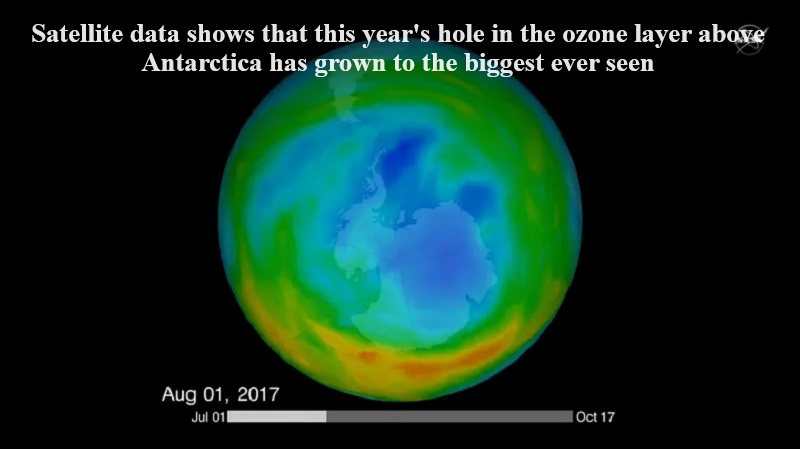
Satellite data indicates that this year’s Antarctic ozone layer hole has expanded to become one of the largest ever recorded, with experts suggesting that the enormous gap could be linked to the eruption of Tonga’s underwater volcano in early 2022.
In January of last year, Tonga experienced a massive underwater volcanic eruption, which triggered tsunami warnings and was even visible in satellite imagery as smoke and ash were propelled into the atmosphere.
On September 16, 2023, the European Space Agency’s (ESA) Copernicus Sentinel-5P satellite observed that the ozone hole had reached an area of approximately 26 million square kilometers.
These findings imply that this gap is one of the largest seasonal ozone holes ever observed, surpassing the previous largest ozone hole recorded in 2000, which covered nearly 28.4 million square kilometers.
The ESA describes this hole, known as an ‘ozone-depleting region,’ as roughly three times the size of Brazil. The agency explains that the ozone hole’s size varies frequently, with the ozone hole growing from August to October and peaking between mid-September and mid-October.
As temperatures in the southern hemisphere stratosphere begin to rise, the polar vortex weakens and eventually dissipates. The ESA anticipates that ozone levels will return to normal by the end of December.
The ozone layer is a portion of Earth’s stratosphere that absorbs the majority of the Sun’s ultraviolet radiation. It consists of a high concentration of ozone, a type of oxygen molecule with three atoms rather than two.
Copernicus Sentinel-5P, also known as Sentinel-5 Precursor, is the first satellite within the Copernicus program specifically designed for monitoring Earth’s atmosphere. Launched in October 2017, it is part of the fleet of Copernicus Sentinel missions developed by ESA for the European Union’s environmental monitoring initiative.
Diego Loyola, a DLR senior scientist, emphasized the precision of the Sentinel-5P total ozone products compared to ground-based data, allowing for close monitoring of the ozone layer and its evolution. The measurements from Tropomi, an instrument on the satellite, extend the global ozone data record of European satellite sensors spanning nearly three decades, as stated by ESA.

Post Your Comments